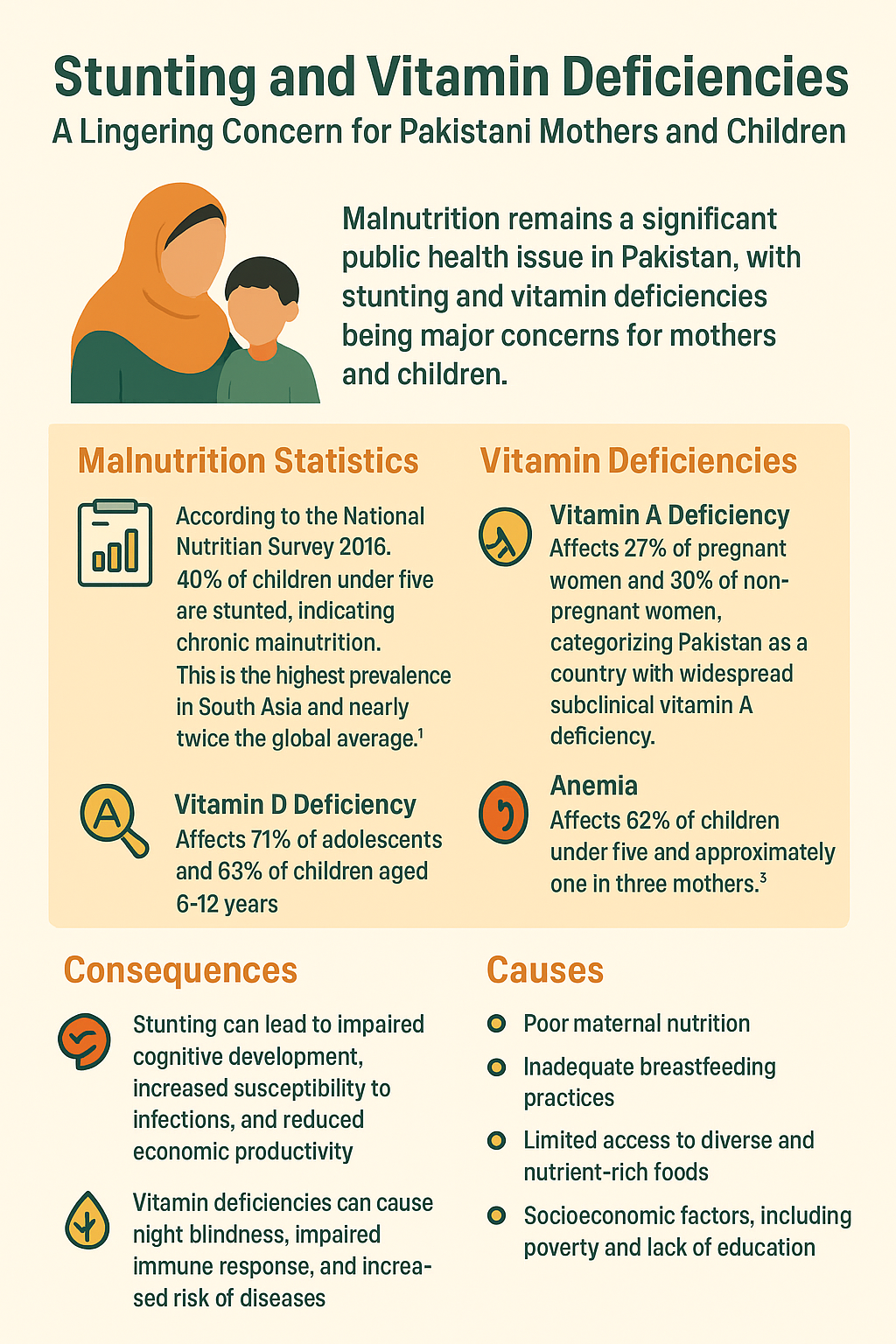
Malnutrition is still a big public health problem in Pakistan. Stunting and vitamin deficiencies worry people a lot when it comes to mothers and children. The National Nutrition Survey from 2018 shows that 40% of kids under five are stunted. That points to long-term malnutrition issues. It is the highest rate in South Asia. The number is almost twice the global average. Sources back this up with numbers one and two.
Vitamin A deficiency hits 27% of pregnant women. It also affects 30% of non-pregnant women. This puts Pakistan in the group of countries with widespread subclinical vitamin A problems. Vitamin D deficiency reaches 71% of adolescents. It impacts 65 % of children between six and twelve years old. Anemia shows up in 62% of children under five. About one in three mothers deals with it too. Studies three, four, and five confirm these figures.
Stunting often leads to problems with cognitive development. It makes kids more likely to get infections. In the long run, it cuts down on economic productivity for those affected. Vitamin deficiencies bring on things like night blindness. They weaken the immune response in a real way. That raises the risk of various diseases overall.
Poor nutrition in mothers plays a key role here. Inadequate breastfeeding practices add to the trouble. Limited access to diverse foods full of nutrients makes it worse. Socioeconomic issues come into play too. Poverty and lack of education hold things back pretty much.
Source References
1. UNICEF Pakistan. (2018). National Nutrition Survey 2018 – Key Findings Report.
2. Haseeb, M., et al. (2025). Prevalence and consequences of vitamin A deficiency in pregnant women in Pakistan and the role of strategic nutritional policies. Discover Public Health, 22, 379.
3. Shahid, S., et al. (2020). Association of vitamin D levels with preeclampsia. J Pak Med Assoc, 70(12(B)), 2390-2393 ³ ¹ ⁴.

Leave a Reply